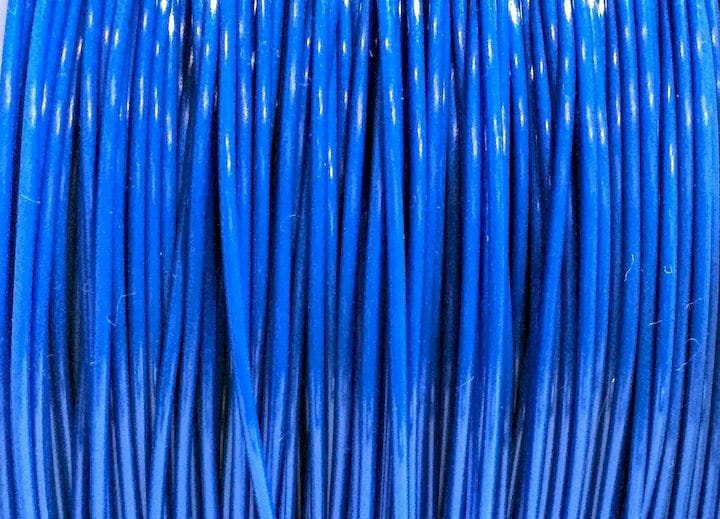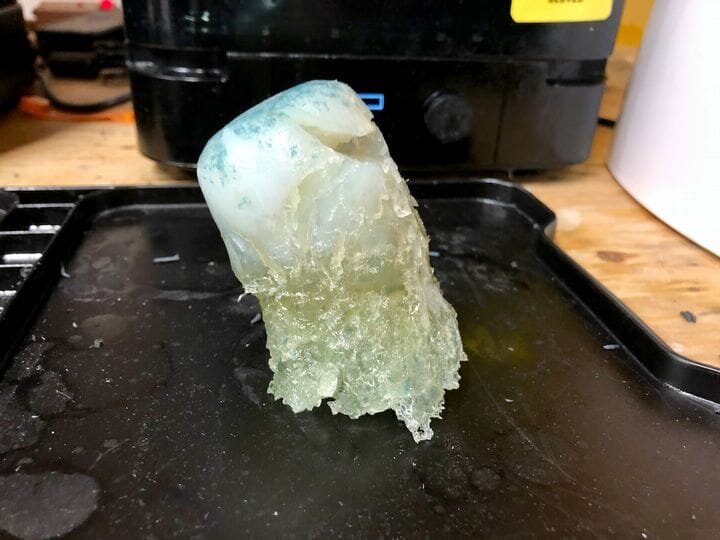![How much material is this? [Source: Fabbaloo]](https://fabbaloo.com/wp-content/uploads/2020/05/image-asset_img_5eb0a06289da2.jpg)
This week’s question deals with arithmetic.
Reader Johan Smit asks:
“1 meter of 1.75 ABS filament equals to ??? cubic centimeters?”
This type of question turns up occasionally and we’ve never really written an answer, so today we do.
In the world of 3D printing filament there are three different factors that are commonly used as measurement: weight, volume and length. While weight is perhaps the most common measurement, the others do appear from time to time, and it can be a bit confusing to compare them.
All are used to measure quantities of 3D printer filament. This is required certainly when purchasing 3D printer filament, but it’s also useful when estimating how much filament is to be used on a given print job, or estimating the weight or volume of a printed object.
The question is, how do you convert between them?
Filament length and volume are the easiest to convert between, and it’s simple geometry.
Length To Volume
Volume = Length * π * (Radius^2)
To convert length to volume, you need to compute the cross-sectional area of the filament and then multiply by the length. Be sure to use consistent units. Let’s do an example, using Smit’s question from above.
1 meter of filament is equal to 100cm
The radius of the filament is (close to) 1.75mm / 2 = 0.875mm or 0.0875cm
The cross sectional area is equal to π * radius squared, in this case π * (0.875)^2 = 0.024sqcm
Multiplying by the length, we get 100 * 0.024 = 2.405 cubic cm
Easy, right?
Volume To Length
Length = Volume / (π * (Radius^2))
To convert volume to length we simply do this backwards. Suppose we have 11.4cc of volume and we want to determine the corresponding length of 2.85mm filament:
Compute the cross-sectional area as (0.285/2)^2 * π
Divide the volume 11.4cc by the cross-sectional area to find 178.7cm of filament as the length.
Weight to Volume
Weight / Density
Things get a lot more complex when dealing with weight, simply because each type of material has different densities.
The first thing you need to know is the precise density for a given material. An excellent resource for this is Simplify3D’s filament properties table, found here:
https://www.simplify3d.com/support/materials-guide/properties-table/
There we can see some common material density factors:
ABS: 1.04 grams per cubic centimeter
PLA: 1.24 gr/cc
PETG: 1.23 gr/cc
ASA: 1.07 gr/cc
And there are many others on the table. Note that some materials are a bit tricky. Nylon, for example, comes in many types and has a range of 1.06-1.14gr/cc on Simplify3D’s table. You’ll have to know the specific material involved. There are further resources on the Internet for practically any known material.
Once you know the density, it’s straightforward to convert weight to volume by dividing weight by the density. For example, if we have a 224gr 3D printed object made in PLA, its likely volume would be 224 / 1.24 = 180cc.
Volume to Weight
Volume * Density
The reverse, converting a volume to a weight, is even easier to calculate. Simply look up the material density and multiply.
For example, if we have a 317cc object made from ASA, we would multiply 317cc * 1.07gr to find the object weighs 339gr.
If you’re looking for a very rough estimate, it’s sometimes useful to assume the density is 1.0 and go with that.
Weight to Length
Converting weight to length is a bit more complex as you essentially need to do two steps from above in sequence. Again, you need to know the material and density.
As an example, let’s figure out the length of 1.75mm PETG filament we need to produce a 178gr object.
First convert the weight to a volume. Using the formula above 178gr of PETG equals 166.35cc of material. Then convert this volume into a length, as per the above formula and in this case we find it should be about 69m of material.
Length to Weight
Again we need to combine formulas here. First convert the length into a volume, then compute the weight of that volume in a specific material.
For example, if we have 10m of 2.85mm ABS filament, we first compute the volume to be 63.8cc. Then with ABS’s typical density of 1.04gr/cc, we have a computed weight of 66.35gr.
Tips
The most important thing to remember is to use consistent units. Here we’ve tried to use centimeters and grams in the formulas. You can use whatever measurement you want, but just be consistent otherwise it won’t work.
Also don’t forget that your radius is half the diameter. So don’t use 1.75mm, use 0.0875cm. Don’t use 2.85mm, use 0.1425cm. Some shortcuts:
-
2.85mm cross sectional area = 0.06379sqcm
-
1.75mm cross sectional area = 0.02405sqcm
Good luck!











